
- Home
- About Us
- Sustainability
- Investors
- News
- People & Culture
-
Regions
Becoming financially responsible is a goal people all over the world struggle with. Whether we earn enough to be financially spontaneous at times, or our bills ensure that every cent is spent, the cost of living always seems to increase just a bit more than our income. Saving any portion of that income is essential for many reasons including emergencies and our own personal goals. But saving requires discipline and a bank account. Temptation to spend our intended savings is usually deterred by putting the funds into a separate savings account. What happens when you don’t have a bank account? Financial institutions have repeatedly told us that it’s no good storing the money under our mattresses. For the millions of people in Africa with no access to traditional banks, the solution is Mobile Money.
Living from pay-check to pay-check is common in African countries, but Mobile Money is changing this way of living. According to a report from the Boston College Economics Department, Mobile Money users are 10.9% more likely to save than those who do not have a Mobile Money account.
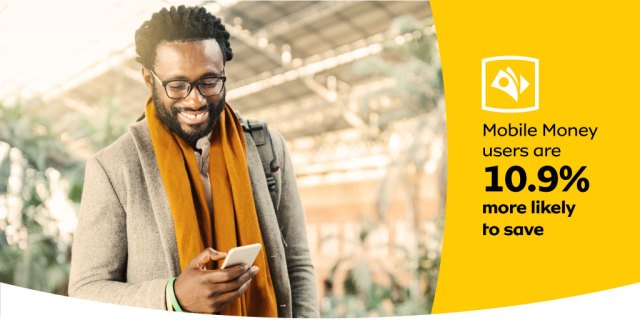
There are 30 million MTN Mobile Money active monthly users across 14 countries in Africa. Of those 30 million people, 6 million use MTN Mobile Money to save funds.. This means that 6 million people in Africa plan to alter their financial behaviour. Just as a person with a traditional bank account would use a banking app or website to pay home loans, school fees, and then transfer a portion into a savings account, an MTN Mobile Money user can now do exactly the same.
A shift towards saving more brings incredible potential to Africa. Aside from being able to handle income variations, planning for the future becomes much more realistic. For example, working parents are able to save to provide their children with a higher education. In countries like South Africa, where the annual cost of university and boarding fees costs more than the average household income, it is essential to start saving for a tertiary education as soon as possible.
With more people who live in Africa able to use mobile money to save, there is a higher likelihood of saving for retirement. Mobile technology isn’t just about the chance to change the financial behaviour of people in Africa, by removing the barriers that prevent important tasks like saving money. Mobile technology can change the trajectory of everyone on the continent.
Where there are no jobs available, African people are encouraged to create jobs. In countries like Cameroon, part of the national strategy to reduce poverty includes entrepreneurship. In Uganda, entrepreneurship has been worked into the school system so that the youth can learn to run businesses before they enter the workforce.
The African Union Development Agency recently launched a campaign called 100 000 SME’s for 1 Million Jobs by 2021 which aims to provide concrete opportunities for youth in the areas of education, employment, entrepreneurship and engagement. The continent-wide call for more entrepreneurs will also help to achieve several of the UN’s Sustainable Development Goals. This includes a reduction in poverty, decent work and economic growth, reduced inequalities as well as industry, innovation and infrastructure.
The digital world provides all kinds of entrepreneurial opportunities, from publishing blogs and creating online stores to managing the digital marketing activities of other business owners – almost anyone can operate a business online, and find a YouTube tutorial to learn the relevant digital skills! For those who prefer working in the physical world, there is clearly still value in traditional brick and mortar businesses – read more about that here. (link to physical stores article)

A publication for small business owners published an article in 2019 about the advantages of buying a franchise. The first advantage listed is the power of the franchisor’s brand. All the heavy lifting has already been done when you purchase a franchise – the brand is established and therefore more likely to be trusted, the business model is tried and tested and even the colour of the paint on the walls has already been chosen. When an entrepreneur buys a franchise, they certainly aren’t starting from scratch.
Other advantages listed in the article include the opportunity to rely on the experience and reputation of others. If you aren’t opening a first-of-its-kind business, you are likely to enjoy a range of benefits including supplier discounts and traction from regional and national marketing campaigns. When new customers walk through the door, they are already familiar rather than sceptical.
Possibly one of the most important advantages listed is support. Starting and running a business can be daunting for even the most confident person. MTN, for example, lends support to 5 million of MTN retail store owners across Africa and the Middle East. Support includes the relevant training and ensuring a full understanding of the business model. It also includes the opportunity to learn from the insights of other franchisees, while running a business completely alone requires time-consuming research and a lot of trial and error.
As the continent’s population grows, so does the need for jobs and the opportunity to gain new customers. Opening a franchise in an African country can certainly be considered as a way to be entrepreneurial with minimal risk.
It has made an impact on everything we do and everything we interact with. This includes the way we consume content. Music, movies, games and stories broke out of their physical constraints and into the digital world as soon as the right tools became available. Today, there is so much content available for consumption that it would be impossible for an individual to get through all of it. To put the volume into perspective, consider that 400 hours of video is published on YouTube every minute.
Content creators have more platforms available to showcase their work than the world has ever seen. Artists have a better chance of reaching the right audience than ever before, and even a niche audience can be made of millions in a digital world. In Africa, people are just as likely to stream local content as they are to stream whatever is trending worldwide. A band from Nigeria is just as likely to sell out a show in their own country as a visiting Grammy winner is. People in Africa love streaming African content. So much so, that millions of people have subscribed to MTN’s various rich media services, including music streaming services.
Artists have a better chance of reaching the right audience than ever before.
In 2019, the International Telecommunications Union posed the question of how to bring meaningful connectivity to all the world’s citizens. This includes local content in local languages. Rich media services are doing just that by enabling anyone with a cell phone and an internet connection to watch or listen to exactly what they want, whenever they want.
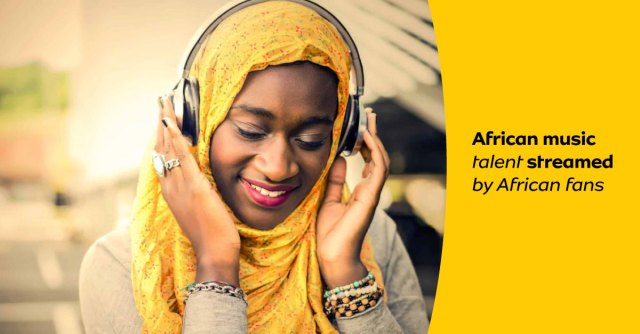
So much music is featured on the global streaming giants, that content which isn’t coming from the US can quickly become lost in the mix. Those who understand the power of African music are therefore investing in bringing local content to the mobile phones of African listeners via various music streaming services.
In South Africa and Nigeria, fans are finding their favourite artists on an app called MusicTime. The website from which to download the app features local artists first, so users immediately know they’re going to find local music easily.
Now that more African artists are being showcased on local and international digital platforms, talent from the continent can be more easily accessed by fans on the continent. This kind of disruption also brings African talent closer to the rest of the world.
From drawings on the walls of caves, to words on the pages of a book, to scenes played out on stages and screens across the world. Every community in the world has stories to share with the intention of teaching, informing or entertaining.
The digital world has made a big impact on the way we tell stories today. We tell stories in short form, in long-form, in audio form, visual form, written form, or all forms mixed into one. We tell stories for screens as big as billboards, or as small as smartphones. Our stories have the potential to reach beyond the eyes and ears of those around us, crossing borders and oceans to find a global audience. Stories can be created and published by anyone with an idea and an internet connection, giving us more variety and more content than traditional media ever could. In Africa, stories are in abundance, and the audience is rapt.
Considering that in 2018, the GSMA reported 774 million mobile SIM connections in sub-Saharan Africa, it comes as no surprise that more people on the continent are watching video content on their mobile devices than on their televisions. While a lot of that content is found on the world’s largest social media platforms – Facebook and YouTube – local video platforms are becoming popular too. MTN Shortz is one example of a short-form video platform where African content creators are publishing original content.
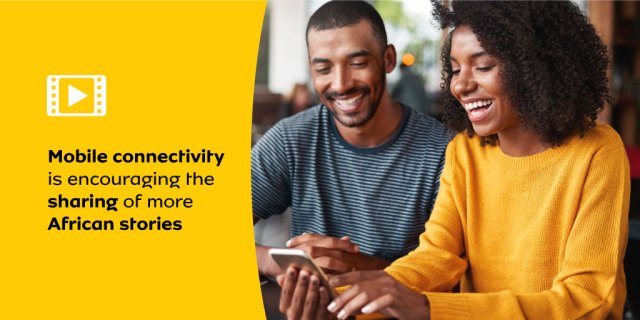
The streaming of local music is also booming on the continent. Whether fans are signing up on Spotify or looking for up-and-coming artists on local platforms like Boomplay, Africa is dancing to the beat of relevant music. Streaming is so popular that millions of African subscribers are engaging with rich media services on MTN’s platforms alone.
Other forms of content, including the news, audiobooks, even games and daily jokes are becoming more accessible to mobile subscribers in Africa. In every country where MTN offers rich media services, the content featured on the MTN Play channels is high in volume and unique to each region. One glance at the content catalogues, and it becomes clear that Africa is teeming with creatives who have a story to tell. The millions of Africans who subscribe to content services to ensure these stories reach their mobile phones make it clear that we want to hear and read and see more.
As more platforms with African roots appear in the digital world, the collective voice of the continent’s creative population becomes louder. Our audience is larger and closer than ever before, and mobile connectivity is encouraging the sharing of more African stories.
It is about planning for the unexpected, the inevitable and the future. Since Mobile Money arrived on the continent, people in Africa now have access to additional financial services including insurance. As is the case with most digital services, insurance in Africa has taken a mobile route.
Insurance companies are very aware that technology should be part of the foundation of their business models. Mobile insurance has been established as the most efficient way to reach the African market. PriceWaterhouseCoopers compiled a report entitled Ready and Willing: African Insurance Industry Poised for Growth which highlights technology as a key trend that impacts insurance. The report notes that mobile phones and Mobile Money offer a significant opportunity for the insurance market in African countries.
Traditional insurance companies are therefore partnering with technology companies and innovators to ensure the right policies and products reach Mobile Money users. MTN Mobile Money users in Ghana and Uganda, for example, are able to take out insurance policies with a company called aYo; the mobile microinsurance service provider is a joint venture between MMI Holdings and MTN. The financial products are underwritten by Metropolitan Life Insurance.
Since aYo launched, more than 5.3 million policies have been issued to MTN Mobile Money users.
Now that insurance services are more easily available, people in Africa are ready and willing to take out a policy. The PwC report describes insurance penetration in Africa as among the lowest in the world, but now that insurance is mobile, this reality is set to change.
aYo offers MTN Mobile Money users and subscribers hospital cover and life insurance. Users dial a USSD code in order to begin the registration process, and premiums are
deducted through airtime or mobile money. Cover can be increased at any time and bonus cover can be earned by getting friends and family members to sign up. Policyholders are also prompted to add the details of caretakers – the person who will handle financial affairs and other details in the event of death or hospitalization. Beneficiaries can be added via USSD as well, so the insurers can pay funds out correctly.
An article in The Africa Report describes Ghana as among the fastest-growing Mobile Money markets in sub-Saharan Africa, and the country for other territories like Nigeria to look to when it comes to insurance penetration. Regulators and Ghanaian government have encouraged an increase in mobile insurance products for citizens over the years, and the country’s central bank reworked the regulatory framework for mobile money to allow operators to run services through existing subsidiaries. Ghana is providing an example for the rest of Africa which showcases how well financial services and mobile technology can work together.
As is the case with most traditional industries, insurance is not immune to disruption. By partnering with innovators and applying a mobile-first approach, insurance companies can successfully penetrate the African market. The population of Africa is, therefore, more likely to take advantage of financial services and plan for a bright future.
With a good connection, a smartphone and a laptop, almost anything is accessible. Working and hosting meetings from home, ordering lunch, taking a break from work to read an article like this, booking a flight or planning a holiday can all be done without actually going anywhere. The digital link to our physical world becomes stronger every time a new solution, a new app, a new feature or update is made available. Why then, do we still venture into the physical world at all? Why are physical stores still open? Why are companies like MTN, who want everyone to enjoy the benefits of a connected world, still opening brick and mortar stores? In Africa, there are a number of reasons.
In Africa, we are Still Connecting
Mobile penetration in sub-Saharan Africa is at an all-time high. The GSMA reported 456 million unique mobile subscribers in 2018 and that number continues to grow every year. As the African population grows, the workforce grows and more people are purchasing phones for the first time. For those who don’t have a phone at all, the obvious place to start is in a physical store. There are more than 5 million formal and informal MTN retail stores across Africa and the Middle East, making it easy for a first-time buyer to access a digital device.
A Digital World Still Requires Hardware
Despite how futuristic any digital solution available today may be, we still require a physical object in the real world to use it. While online unboxing videos are always fun to watch, there is still value in walking into a store, looking at and touching various devices before making a purchasing decision. Upgrading from a feature phone to a smartphone is a big transition for some, so having a friendly (human) face to turn to for help is necessary.
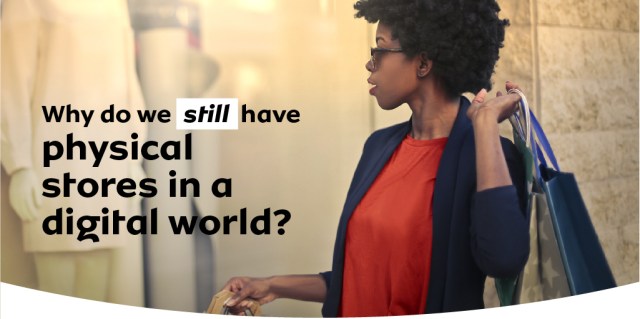
Stores Create Jobs
With more people to serve, comes the need for more physical stores and people to work in them. The retail industry is people-centred and therefore creates a lot of jobs. In areas where trading hours are extended, shop managers and assistants, cashiers and cleaners work in shifts so that balance between personal and work life, and the consumer demand, is optimized. Without brick and mortar stores for people to visit, the unemployment challenge would become even bigger.
A Human Link to a Digital World
Even if you aren’t a first-time buyer, a friendly face to help navigate the digital world is essential. For people who aren’t considered digital natives with an innate understanding of how their devices and programs work, having a real person to help troubleshoot or discover new tricks and tips can be the difference between seeing the digital world as an overwhelming or awe-inspiring place.
For now, in Africa, enjoying the benefits of a modern connected life begins in the physical world.
The world is more connected than it has ever been; more efficient, more convenient, more fun at times. We don’t have to wait to get home to make a phone call or wait to develop the photographs we have taken. We don’t even have to walk around with multiple devices to do multiple things. A big part of our world is in the palms of our hands and we thrive on it. While the convenience, efficiency and fun are welcome, the digital world offers so much more than that. It offers the chance to make meaningful connections.
The 2019 International Telecommunication Union (ITU) focused on a central theme of using digital technologies to transform lives in a positive way. This theme resonates with the way the digital world is impacting the lives of people living in Africa.
Our continent is extremely vast. Cities and rural areas of the same countries are often far from each other, which means that traveling between the two is not always easy. For an African person living in a remote location, making a living often means leaving your hometown and your family behind to find a job in the city. A city where nobody knows you, where everything is different, where it is likely to feel lonely, even in a crowd. The digital world in the palm of such a person’s hand is a connection to home. Gone are the days of hoping that a letter to the family arrived via snail mail, or struggling to send money home to a village where bank accounts are not the norm. Today, all these things can easily be achieved with a smartphone and an internet connection.
MTN provides coverage to cities and rural areas in 17 African countries, and that coverage brings people closer together.
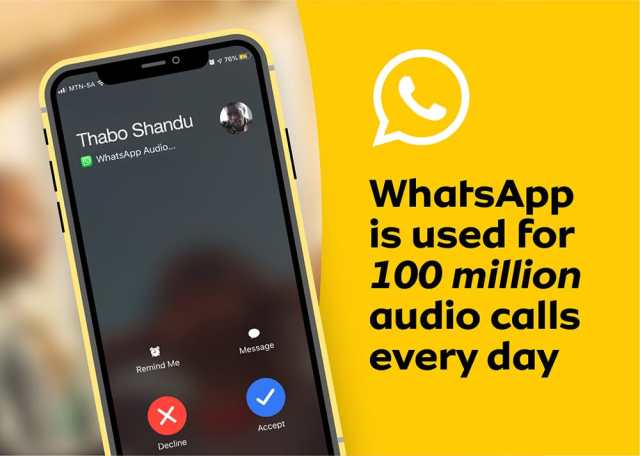
For business owners who want to expand to other markets, the cost of hosting a meeting doesn’t have to include a flight or a long drive. Video and audio calls have become so common across many digital platforms, that it is evolving into the new norm. Facebook reports that 400 million people are making video and audio calls every month, while WhatsApp is used for 100 million audio calls every day. For an entrepreneur who needs to keep costs down but also needs to grow, this technology makes a meaningful impact.
The ITU Forum wants telecommunication companies to consider how we can make connectivity affordable, relevant and fit for purpose so that meaningful connections can be brought to every person in the world. They want “local content in local languages, supported by digital skills, digital education and digital awareness”. We are proud to be able to claim that we as MTN are already doing all of these things.
With 560 million Africans covered, any dream can become a reality.
In Africa, we take those opportunities and use them to turn ideas and ambitions into something real. For an entrepreneur who dreams of reaching a larger market, an online presence makes the dream possible. For a teacher who wishes more resources were available, digital content provides a wealth of material from all over the world. Connectivity is bringing Africa closer to the rest of the world, and African businesses are booming because of it.
The Brookings Institution in Washington DC published a report about Africa’s untapped business potential, calling our continent the world’s next big growth market. The report lists five business opportunities, and connectivity makes an impact on all of them.
Connectivity is key to Africa’s potential as the world’s next big growth market.
The first opportunity is that our population is fast-growing and urbanizing. Africa’s population is expected to reach 1.7 billion people by 2030. More than 80% of that growth is expected to happen in cities, where people are earning more money and creating business opportunities.
The second opportunity is that Africa is industrialising, and manufacturing is set to soar. The Brookings report notes that African industries could double production to nearly US$ 1 trillion within ten years. Industry 4.0 has brought the Internet of Things, automation and the use of robotics in manufacturing to life. Manufacturing has therefore become more efficient, and safer, than it has ever been.

Infrastructure is improving across the continent, bringing about a third business opportunity. With better infrastructure, it becomes easier to start and grow businesses, and reach various regions both in and out of the country.
There is major potential in Africa’s agriculture and natural resources. The fourth opportunity can be found in innovating the way we farm and use our abundance of resources. With a world-class network, the use of digital solutions like IoT helps farmers to produce more and therefore earn more. Read more about how a connected continent impacts agriculture here.
The fifth opportunity is Africa’s increasing digital and mobile access. The Brookings report notes that mobile data traffic across the continent is projected to increase sevenfold by 2022. Businesses with brick and mortar shops can easily create online stores and reach a global audience, while informal traders finally have the opportunity for financial inclusion because of mobile money.
A smartphone and an internet connection can help turn a small business into a global brand.
As we connect more people to the digital highway, entrepreneurs are born and businesses grow. As those businesses grow, more people have the opportunity to be employed, creating a ripple effect that puts African countries on the global map.
A quick text to a colleague, an important email from a client, a video call with people across the world – these tasks no longer require office hours. Mobile technology has altered the way we work forever. While we marvel at (or bemoan) our extended workdays, farmers have been doing it for centuries. Neither crops nor livestock are concerned about the numbers on a clock or the public holidays on a calendar. The farmer’s day does not end when the sun sets; because when the sun sets the farmer has to worry about whether his or her livestock is safe and secure, or whether that cow might give birth at midnight, among a range of other concerns. In an innovative world, this is where technology comes in to ease and optimize the workload.
Innovation for farmers comes in the form of cloud-based technology and the Internet of Things. This pillar of Industry 4.0 has led to the creation of smart collars for livestock.
When an animal wears a smart collar, the farmer can track its location and health in real-time.
Rather than wondering whether a predator or a thief is going to get away with an animal in the middle of the night, smart collars minimise the guesswork. If, for example, a predator enters the territory of farm animals, the heart rate of the farm animal will increase and the farmer will be alerted about the distress immediately. Naturally, alerts from the smart collar are sent straight to the farmer’s phone in the event of a potential incident. The ability to prevent rather than react to incidents results in fewer animals lost, and more money saved in the long run.
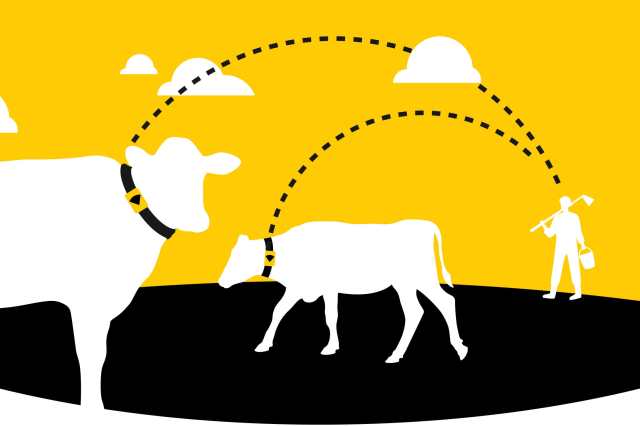
In countries like South Africa, smart collars are helping to prevent the theft of livestock as well as the ability to identify an animal if it wanders over to a neighbouring farm. The combination of a smart collar, cloud-based management and a user-friendly digital interface also enables farmers to gather data and identify behaviour patterns, which lead to more informed decisions about managing livestock.
Similarly, in Nigeria we launched an animal identification management system to monitor cattle location, send emergency alerts in cases of distress and create grazing areas through solar powered GPS geo-fences.
Smart collars have made an impact on Africa’s rhino poaching problem as well. MTN partnered with IBM, a university in the Netherlands called Wageningen, and a game reserve called Welgevonden to create and deploy smart collars for animals in danger of being poached. Whenever the behaviour of an animal in the game reserve changes (as they do when hunters approach), game rangers receive alerts and are able to act quickly.
With more than 1000 rural sites installed by MTN in Africa, more livestock farmers have the ability to use smart collar solutions. When connectivity becomes the enabler to solve age-old problems, technology becomes so much more valuable than answering a late night email.
If you enjoyed this article, read about how crop farmers are using IoT solutions here.
It doesn’t matter who you are, where you are, or what you do – the need to feed our human bodies is one of life’s great equalizers. Food is something that some of us take for granted, and that others have in such minimal amounts that they can barely stay alive. We have a food problem. According to an organization called Future Agenda, the world will need 60% more calories per day to feed 9 billion people by 2050. And yet the world wastes 2 billion tonnes of food every year. A large portion of that food is wasted at an agricultural level – before it even reaches a factory or your dinner table. If ever we needed a reason to use technology to solve a global problem, this is it.
The UN reports that almost half of the African population relies on agriculture to make a living. Imagine the potential to solve our food problem if we could enable half the African population, 530 million people, to farm more efficiently? It all starts with a connection. When farmers are connected, Internet of Things solutions become a reality.
MTN has over 1000 rural sites, taking us closer to a truly connected continent.
The Internet of Things has become a major contributor to a concept called precision agriculture. The objectives in combining technology with farming include higher yields, reduction of operating costs and an overall increase in efficiency. One example can be found in Kenya. A company called UjuziKilimo installs sensors in farm soil which send data to farmers’ mobile devices. This data includes weather updates which helps farmers decide when to plant seeds in our ever-changing climate, and even information about soil quality. Farmers only need to send a text message to UjuziKilimo for the team to come out and begin with a farm-analysis. And when farmers are connected, they are able to share the data they receive with their neighbours – spreading the knowledge, and amplifying the impact so that everyone is maximizing the potential of their own farms. In South Africa, farmers are also making use of mobile apps to send alerts about pest problems and receive weather updates and other farming related advice.
[vimeo 219679989 w=640 h=360]
A sustainable farm is a successful one which makes a far-reaching impact. More people can be employed in the agriculture sector when farming is efficient, and more food is produced to feed our growing global population.
All of these solutions are only possible because of our natural eagerness to innovate, and the ability to do so with technology and connectivity as a solid foundation. Technology and people truly can be good together – and that’s food for thought!
References:
Global Farmer Network – Rwanda Leadership Honoured
Farmers Weekly – New Smartphone Apps to Help Farmers
Brookings – Foresight Africa 2016